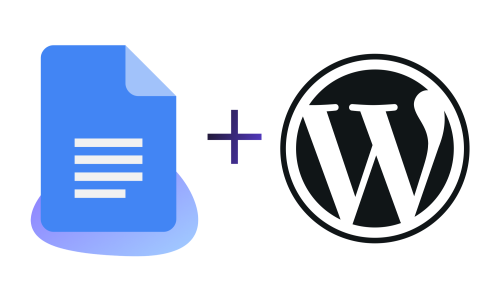The Link Between Your Digital Footprint and Your Carbon Footprint
Image

Our path forward in fighting the climate crisis should certainly leverage technology, but we must be realistic about which factors are enabling progress, as opposed to undermining progress. It's time we take digital sustainability seriously.
— Tim Frick, founder and president of Mightybytes, digital agency and Certified B Corp
Across the globe, there are 4.66 billion people browsing the internet and those individuals are using multiple devices, connecting through several social media platforms, and searching for new ideas on a handful of different search engines. Billions of people, trillions of devices, a worldwide labyrinth of data — and more than 40% of the world's population is yet to come online.
This Earth Day, we're talking about digital sustainability and how the design, hosting, data, and infrastructure of our websites contribute to global carbon emissions. It's so frictionless to tweet your thoughts or type something into a Google search bar, that it's easy to overlook that these repeated actions, happening at such a scale, play their own part in the climate crisis.
"While awareness seems to be growing around the environmental impact of the internet, the early 'move fast and break things' culture of the tech industry did a lot of damage," says Tim Frick, founder and president at digital agency Mightybytes, a Pantheon customer, who achieved estimated climate positive emissions with their websites in 2020. Because Pantheon sits atop Google Cloud Platform (GCP), which claims carbon neutrality since 2007, Mightybytes' client hosting is also carbon negative.
"When we first started talking to our clients about digital sustainability in the early 2010s, we received glazed over looks. Now, people are starting to understand that so many of the things we use day to day are digital in nature — from Netflix To Alexa — and that this takes a collective toll."
Some stats to consider:
At current growth rates, the internet will represent 20% of global electricity consumption and up to 5.5 percent of all carbon emissions by the year 2025.
By some estimates, the internet emits 1.6 billion annual tons in greenhouse gas emissions. This number is rising quickly.
More than 50 million tons of e-waste were produced in 2019 alone, a number that’s expected to rise by 8% each year. In addition to clogging landfills and polluting streams and rivers, this waste also contributes to global emissions.
What Contributes to Digital Carbon Emissions?
So where does this waste and energy come from? "The answer is everywhere," Tim says. "Data centers are the most obvious. However, energy is also used in the transfer of data between you and me. It's used in the actual frontend user interface; the interfaces we create and use daily."
According to think tank Wunderman Thompson Intelligence, the rise of cloud computing and 5G streaming exacerbates the issue, as these require heavy infrastructure to process such vast quantities of information. Related, is the physical problem of e-waste, "due to the minerals used in the manufacture of gaming systems and the difficulties around safe and eco-friendly disposal."
Complicating the issue further is the absence of benchmarks that corporations can use to quantify their digital carbon footprint, and measure themselves against it. "There's a huge need for setting a baseline and benchmarking," Tim says. "It's hard for companies to know where to start, which is why you haven't seen awareness grow on a larger scale."
Recommendation from Tim: Use tools like Ecograder and Website Carbon to estimate your digital footprint.
The Journey to an Emissions-Free Website
Tim has dedicated the last 23 years to running a digital agency that helps conscious companies, social enterprises, and large nonprofits drive real change through digital strategy. Even though Mightybytes has been a Certified B Corp for 10 years — a community that collectively offset 6.4 million tons of carbon and diverted 108 thousand metric tons of waste in 2019 alone — Tim and his team are striving for more.
At the start of 2020, with Australia on fire, the arctic ice caps melting, Bangladesh underwater, and the American Midwest battered by cyclones, Mightybytes joined hundreds of other companies in declaring a climate emergency. Their collective goal? To achieve net zero emissions by 2030. Mightybytes' individual goal? To achieve and maintain this much faster, using their advantage as a digital-native company with a relatively small supply chain.
Their history as a Certified B Corp meant the team at Mightybytes was accustomed to reducing emissions by evaluating airline activity, ground travel activity, office lighting, plug loads, heating, and the emissions of individual workstations. The team habitually kept these emissions to a minimum — even introducing office composting — and offset what they couldn't eliminate entirely.
Obviously, at the onset of COVID-19 in 2020, many of these considerations were extended to home offices, as opposed to shared offices, and emissions were drastically reduced. With this, Tim's focus turned to his Pantheon account — which he uses to manage the Mightybytes website and to host his customers' websites — and how he could bring his digital footprint to carbon-negative in 2020.
Wunderman Thompson Intelligence warns against "fixating on physical waste" in climate change conversations, and reminds us, "digital activities also have a significant effect."
Building on a Green Platform
The ability for Tim to offer green, emissions-free website hosting to his customers was made possible, in part, by Pantheon's WebOps platform — Pantheon offers container-based, serverless hosting, and we're built on GCP, a green platform. According to Tim, choosing a web host that powers servers with renewable energy can help you reduce your digital footprint, but the impact is still difficult to quantify.
"So what we did was ask Pantheon for very specific information about our data rates," Tim says. "Using this, we were able to use calculations established by Wholegrain Digital for their Website Carbon tool to estimate the environmental impact of our client websites on Pantheon."
To break it down, here is a summary from Tim's blog post on the formula:
Using the formula Wholegrain Digital employs for their free Website Carbon Calculator, Mightybytes was able to estimate their account’s energy use in kWh.
Even though their hosting was already pretty green due to GCP, the team opted to purchase wind power RECs to cover all account electricity. Tim then “rounded up” these estimates to cover the indirect emissions generated by our hosting.
Based on our calculations, this makes Mightybytes website hosting on Pantheon carbon negative. In other words, it's estimated to remove carbon from the environment.
Adopting Sustainable Web Design Practices
In addition to green hosting, there are sustainable web design practices that help reduce website carbon emissions. Page speed, code sharing, caching, and an efficient user experience all contribute to a more efficient, eco-friendly website.
"You want to create those really efficient interfaces that are easy to use, that download fast, that help you do what you need to do quickly, and find what you need to find quickly," Tim says. "It's really about efficiency — when you couple those two things together, efficiency and renewable energy, that's when you really start to see a bigger picture of sustainability."
The Need for Urgent Action
As with everything related to climate change, there is an obvious urgency to raising awareness and taking action quickly. In March, a group of UN agencies, government organizations, research institutions, and non-governmental organizations formed the Coalition for Digital Environmental Sustainability (CODES), which focuses on new technologies to address climate change; the sustainability and efficiency of existing technologies; and how these intersect with societal inequalities.
In addition, data sustainability is the 13th top trend to watch in 2021, according to Wunderman Thompson Intelligence. The research group warns against "fixating on physical waste" in climate change conversations because "digital activities also have a significant effect."
This Earth Day, all of us in the tech industry — along with every other sector — must aim to do better. At Pantheon, there is a demand from customers like Tim for better reporting around data rates, to help our customers establish clear emissions benchmarks.
"How do we take the actual infrastructure we have on our cloud and quantify emissions from hosting data systems?" Tim asks. "As time goes on, we'll be able to get a better picture of where these emissions are and how to offset them. There's a lot of opportunity and room to improve."
The kicker? Taking a deeper look at our own processes and environmental impact not only aids in the fight against climate change, but also leads to unexpected organizational benefits, too.
"We've been a B-Corp for over ten years now, and that's really helped us create a roadmap for being a better business. It aligns our values, the values of our team, and the values of our clients," Tim says. "All those things play into a bigger picture of creating high impact from a social perspective, and a low impact from an environmental perspective."
To learn more about Mightybytes, head to their website and read their blog for environmentally sustainable and socially responsible business tips.


